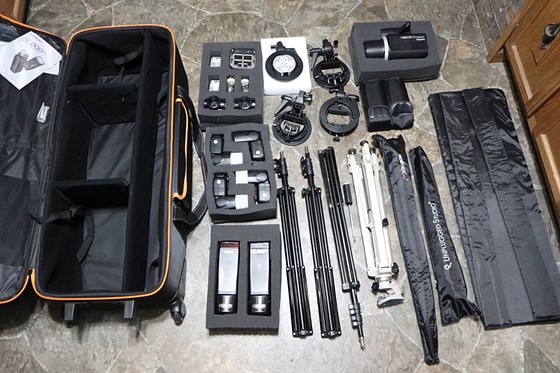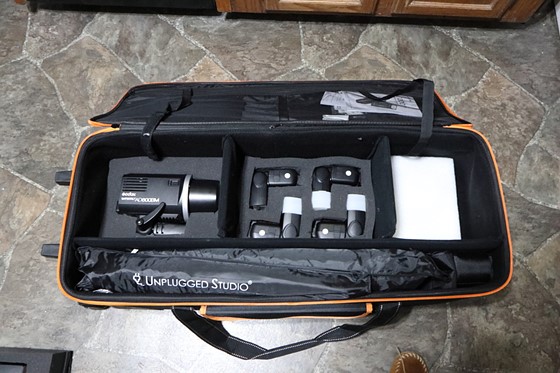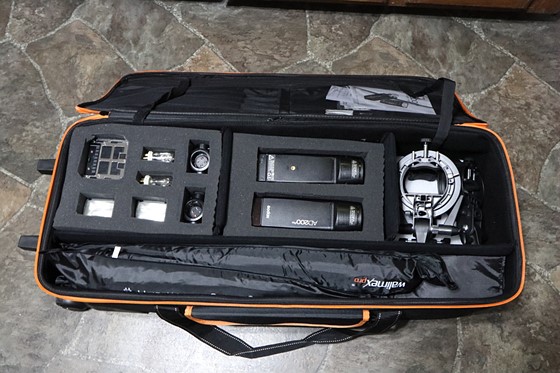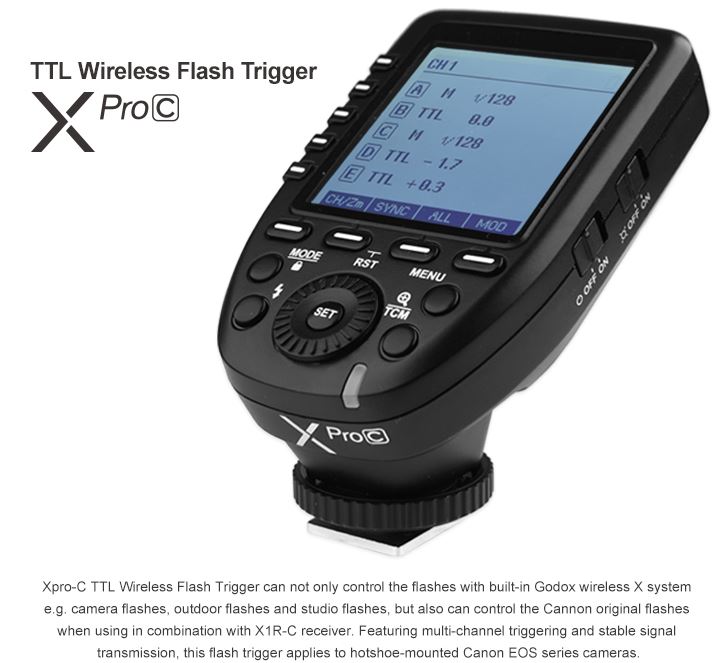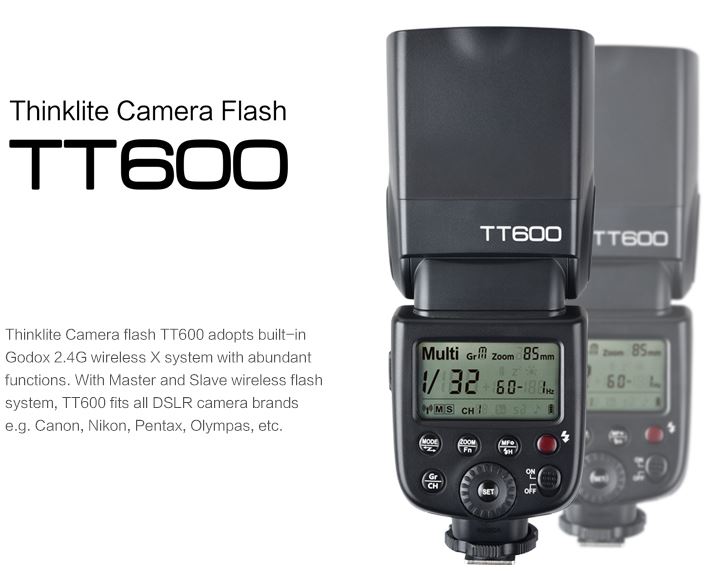How I outfitted my new Godox CB-06 bag with my gear so others may get an idea on what this bag can hold.
I needed a large bag with wheels to store/carry my new gear in and I saw a bunch of bags ranging from $60 way up to $500. Since I have a machine shop in my garage and I can fabricate or fix about anything I figured that as long as the canvas material and zipper would hold up then I can fix anything that may fail on a bag. I also know that I won’t be a power user that drags their gear on the road a lot and I suspect that I may do less than 10 shoots a year off-site.
Since I feel that these Godox flashes are good quality I decided to get their CB-06 ($80) bag a try. I did see some bad reviews on Amazon but the majority of them were positive and again I figured I could fix anything if needed. The three dividers that are shown in the bag come with it and are velcro’d in place so they can be repositioned any way you need. There are also several flat pieces that can be used to separate layers of equipment but these are not rigid. The pieces are shown to the right of the equipment.
To hold all my new gear I customized the compartments with removable foam inserts that are cut to fit each component. I used 3″ thick and 1″ thick foam from Amazon to make the removable inserts and the foam was hot glued together in layers. There are essentially two levels of components that are stacked on top of each other and the removable inserts have a piece of plastic as a base to give them support when taking them in/out of the bag..
Below are pics of all the gear and how they are stacked in the bag.
CONTENTS:
2 – Godox AD200Pro Flash units installed with Optional H200R flash heads
AD200Pro packaged accessories (Bulbs, Fresnal Flash heads, etc)
1 – Godox AD600BM with Battery (Battery not assembled on flash while in bag)
4 – Godox TT600 Flash units
1 – Godox AD-B2 Dual Power Head
3 – Neewer S-Type brackets
1 – Camera Tripod
3 – Light Stands
1 – 33″ Umbrella
1 – 43″ Umbrella
2 – TT600 flash Bags for small items.I don’t have any of the battery chargers in the bag since I won’t need them while off site but they could fit in pouches that are built into the bag.
Hopefully this helps someone.
